Despite the latest GDP figures showing that the US economy had contracted nearly 10% in the second quarter and with unemployment insurance claim numbers continuing to rise, there is still no resolution in Washington on whether the enhanced federal benefits for the jobless set to expire today (31 July) will be extended in some form.
We recently invited our panel to express their views on the possible trade-off between work incentives and the income support provided by the unemployment insurance supplements, whether the top-ups should be reduced or ended, and how the economic and public health conditions in each state might determine the level of federal UI contributions.
We asked the experts whether they agreed or disagreed with the following statements, and, if so, how strongly and with what degree of confidence:
a) Employment growth is currently constrained more by firms’ lack of interest in hiring than people’s willingness to work at prevailing wages.
b) Reducing supplemental levels of unemployment benefits so that no workers receive more than a 100% replacement rate would be a more effective way to balance incentives and income support than simply stopping the supplement at the end of this month.
c) A well-designed unemployment insurance system would tie federal contributions to states on the basis of each state’s economic and public health conditions.
Of our 43 US experts, 38 participated in this survey and the balance of opinion on the three statements is summarized below. More details on the experts’ views come through in the short comments that they are able to make when they participate in the survey.
Labor demand and supply
On the first statement about current constraints on employment growth, a majority of the panel agreed that it is more an issue of labor demand than labor supply. Weighted by each expert’s confidence in their response, 29% of the panel strongly agree, 55% agree, 16% are uncertain, and none disagree.
Among the comments by those who agree, Anil Kashyap at Chicago says that: ‘Especially once the unemployment top-up rolls off, with lockdowns resuming, businesses will remain cautious and consumers reluctant too.’ Barry Eichengreen at Berkeley adds: ‘There is also some understandable reluctance to work (at any wages) owing to safety concerns. Still, I agree.’
Panelists who say that they are uncertain see a role for both demand and supply. Caroline Hoxby at Stanford comments: ‘These two phenomena not mutually exclusive: Employers can have little demand for labor and workers can be unwilling to work at prevailing wages.’ Robert Shimer at Chicago notes: ‘Both matter. Job openings have only fallen modestly and are at more than double their 2009 levels.’ And Robert Hall at Stanford warns: ‘The big issue currently is the high volume of workers who are not working now but expect to be recalled to their existing jobs.’
Pete Klenow at Stanford, who strongly agrees with the statement, points to an April study of data on job vacancies and UI claims, which found that nearly all industries and occupations saw contraction in postings and spikes in UI claims, regardless of whether they are deemed essential and whether they have work-from-home capability.
Balancing work incentives and income support
On the second statement about reducing supplemental levels of unemployment benefits so that no workers receive more than a 100% replacement rate, there is strong majority in agreement. Again weighted by each expert’s confidence in their response, 40% of the panel strongly agree, 54% agree; 6% are uncertain, and none disagree.
Among the comments, Robert Shimer states: ‘There is no reason for replacement rates above 100%. Optimal level is unclear, but probably higher than in normal times due to disease risk. Caroline Hoxby emphasizes that: ‘Since there are costs associated with employment (work clothes, meals outside home, commuting) even 100% replacement rate would discourage work.’ And Bengt Holmstrom at MIT suggests: ‘UI creates allocational distortions, but no reason to stop it entirely. Go down to 60% to strike a compromise.’
Others are more wary about a big reduction. Richard Schmalensee at MIT replies: ‘More efficient, of course, but also harder to get right in a hurry.’ Larry Samuelson at Yale concurs: ‘Bringing replacement rates below 100% would help incentives, but the economy is too fragile for an abrupt end.’ And Barry Eichengreen, who says that is he uncertain, remarks: ‘Would strengthen incentive to work for some but remove adequate income support for some. So there are trade-offs.’
Joseph Altonji at Yale, who notes that ‘Labor demand is weak, so insurance is needed’, provides links to a co-authored study of his, which finds no evidence that more generous benefits disincentivized work either at the onset of the benefits extensions or as firms looked to return to business over time. He also references summaries of two Brookings Papers on the US labor market during the pandemic, while Pete Klenow reminds us of the study of UI replacement rates during the pandemic that finds a median rate of 134% for UI benefits under the CARES Act.
Unemployment insurance linked to states’ economic and public health conditions
On the third statement about linking federal UI contributions to each state’s economic and public health conditions, there is another majority in agreement. Weighted by each expert’s confidence in their response, 21% of the panel strongly agree, 60% agree; 20% are uncertain, and none disagree.
Among those who agree, Anil Kashyap argues that: ‘The current system that uses the “special” tailoring of saying everywhere is the same – even a poor rule would beat that.’ Richard Schmalensee responds: ‘We also need unrestricted aid to states based on their conditions – despite the waste this would entail.’ And Robert Shimer says: ‘I strongly agree with the connection to public health conditions. The argument for extending benefits in recessions is weaker.’
Others mention the potential impact on the incentives for states. Daron Acemoglu at MIT points out: ‘One might have to worry about state moral hazard, but in the current environment, this is not the first order concern.’ Bengt Holmstrom adds: ‘One concern is moral hazard. In Covid situation, very small. In general, bigger.’ And Caroline Hoxby, who responds that she is uncertain, comments: ‘Would agree if could identify EXOGENOUS part of states’ conditions. Should not give states incentives, though, to be irresponsible.’
Among the other panelists who are uncertain, Michael Greenstone at Chicago says: ‘Implementing public health component would need some careful thought… unclear that it would be an improvement.’ Robert Hall states: ‘There’s no particular reason for both levels of government to be involved.’ And Kenneth Judd at Stanford concludes: ‘Let’s not make the UI system too complicated. The purpose is to help people get through unemployment. Let’s focus on that.’
All comments made by the experts are in the full survey results.
Romesh Vaitilingam
@econromesh
July 2020
Question A:
Employment growth is currently constrained more by firms' lack of interest in hiring than people’s willingness to work at prevailing wages.
Responses
Responses weighted by each expert's confidence
Question B:
Reducing supplemental levels of unemployment benefits so that no workers receive more than a 100% replacement rate would be a more effective way to balance incentives and income support than simply stopping the supplement at the end of this month.
Responses
Responses weighted by each expert's confidence
Question C:
A well-designed unemployment insurance system would tie federal contributions to states on the basis of each state’s economic and public health conditions.
Responses
Responses weighted by each expert's confidence
Question A Participant Responses
Participant |
University |
Vote |
Confidence |
Bio/Vote History |
|---|---|---|---|---|
 Daron Acemoglu |
MIT | Bio/Vote History | ||
|
|
||||
 Joseph Altonji |
Yale | Bio/Vote History | ||
|
|
||||
 Alan Auerbach |
Berkeley | Bio/Vote History | ||
|
|
||||
 David Autor |
MIT | Bio/Vote History | ||
|
|
||||
 Katherine Baicker |
University of Chicago | Bio/Vote History | ||
|
|
||||
 Abhijit Banerjee |
MIT | Did Not Answer | Bio/Vote History | |
|
|
||||
 Marianne Bertrand |
Chicago | Bio/Vote History | ||
|
|
||||
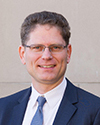 Markus Brunnermeier |
Princeton | Bio/Vote History | ||
|
|
||||
 Raj Chetty |
Harvard | Bio/Vote History | ||
|
|
||||
 Judith Chevalier |
Yale | Bio/Vote History | ||
|
|
||||
 David Cutler |
Harvard | Bio/Vote History | ||
|
|
||||
 Angus Deaton |
Princeton | Bio/Vote History | ||
|
|
||||
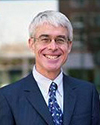 Darrell Duffie |
Stanford | Bio/Vote History | ||
|
Yes, very likely so, although there are both supply and demand effects. Consider the level of UI benefits raised in your next question.
|
||||
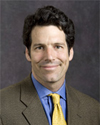 Aaron Edlin |
Berkeley | Bio/Vote History | ||
|
|
||||
 Barry Eichengreen |
Berkeley | Bio/Vote History | ||
|
There is also some understandable reluctance to work (at any wages) owing to safety concerns. Still, I agree.
|
||||
 Liran Einav |
Stanford | Bio/Vote History | ||
|
|
||||
 Ray Fair |
Yale | Bio/Vote History | ||
|
|
||||
 Amy Finkelstein |
MIT | Bio/Vote History | ||
|
|
||||
 Pinelopi Goldberg |
Yale | Did Not Answer | Bio/Vote History | |
|
|
||||
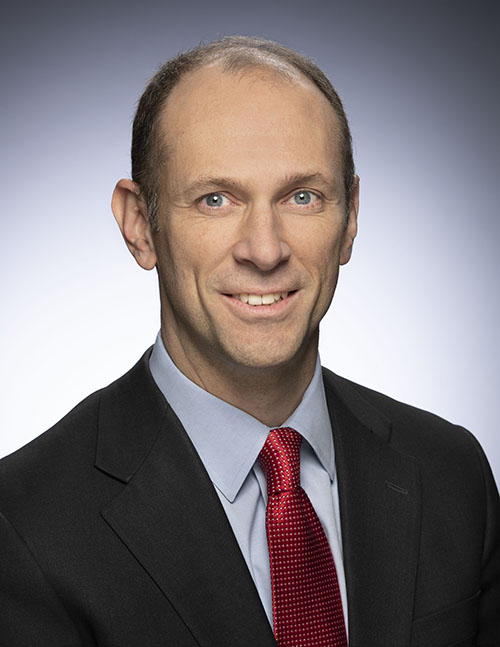 Austan Goolsbee |
Chicago | Bio/Vote History | ||
|
|
||||
 Michael Greenstone |
University of Chicago | Bio/Vote History | ||
|
|
||||
|
Robert Hall |
Stanford | Bio/Vote History | ||
|
The big issue currently is the high volume of workers who are not working now but expect to be recalled to their existing jobs.
|
||||
 Oliver Hart |
Harvard | Bio/Vote History | ||
|
|
||||
 Bengt Holmström |
MIT | Bio/Vote History | ||
|
|
||||
 Caroline Hoxby |
Stanford | Bio/Vote History | ||
|
These 2 phenomena not mutually exclusive: Employers can have little demand for labor & workers can be unwilling to work at prevailing wages.
|
||||
 Hilary Hoynes |
Berkeley | Bio/Vote History | ||
|
|
||||
 Kenneth Judd |
Stanford | Bio/Vote History | ||
|
|
||||
 Steven Kaplan |
Chicago Booth | Bio/Vote History | ||
|
|
||||
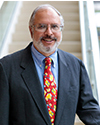 Anil Kashyap |
Chicago Booth | Bio/Vote History | ||
|
especially once the unemployment top off rolls off, with lockdowns resuming businesses will remain cautious and consumers reluctant too
|
||||
 Pete Klenow |
Stanford | Bio/Vote History | ||
 Jonathan Levin |
Stanford | Bio/Vote History | ||
|
|
||||
 Eric Maskin |
Harvard | Did Not Answer | Bio/Vote History | |
|
|
||||
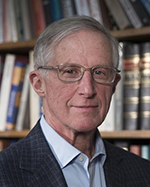 William Nordhaus |
Yale | Bio/Vote History | ||
|
|
||||
 Maurice Obstfeld |
Berkeley | Bio/Vote History | ||
|
|
||||
 Emmanuel Saez |
Berkeley | Bio/Vote History | ||
|
|
||||
 Larry Samuelson |
Yale | Bio/Vote History | ||
|
|
||||
 José Scheinkman |
Columbia University | Bio/Vote History | ||
|
|
||||
 Richard Schmalensee |
MIT | Bio/Vote History | ||
|
|
||||
 Carl Shapiro |
Berkeley | Bio/Vote History | ||
|
|
||||
 Robert Shimer |
University of Chicago | Bio/Vote History | ||
|
Both matter. Job openings have only fallen modestly and are at more than double their 2009 levels
-see background information here |
||||
 James Stock |
Harvard | Did Not Answer | Bio/Vote History | |
|
|
||||
 Richard Thaler |
Chicago Booth | Bio/Vote History | ||
|
More of a guess than an opinion.
|
||||
 Christopher Udry |
Northwestern | Did Not Answer | Bio/Vote History | |
|
|
||||
Question B Participant Responses
Participant |
University |
Vote |
Confidence |
Bio/Vote History |
|---|---|---|---|---|
 Daron Acemoglu |
MIT | Bio/Vote History | ||
|
|
||||
 Joseph Altonji |
Yale | Bio/Vote History | ||
|
Labor demand is weak, so insurance is needed.
-see background information here -see background information here |
||||
 Alan Auerbach |
Berkeley | Bio/Vote History | ||
|
|
||||
 David Autor |
MIT | Bio/Vote History | ||
|
|
||||
 Katherine Baicker |
University of Chicago | Bio/Vote History | ||
|
|
||||
 Abhijit Banerjee |
MIT | Did Not Answer | Bio/Vote History | |
|
|
||||
 Marianne Bertrand |
Chicago | Bio/Vote History | ||
|
|
||||
 Markus Brunnermeier |
Princeton | Bio/Vote History | ||
|
|
||||
 Raj Chetty |
Harvard | Bio/Vote History | ||
|
|
||||
 Judith Chevalier |
Yale | Bio/Vote History | ||
|
|
||||
 David Cutler |
Harvard | Bio/Vote History | ||
|
|
||||
 Angus Deaton |
Princeton | Bio/Vote History | ||
|
|
||||
 Darrell Duffie |
Stanford | Bio/Vote History | ||
|
The incentive effects seem obvious.
|
||||
 Aaron Edlin |
Berkeley | Bio/Vote History | ||
|
|
||||
 Barry Eichengreen |
Berkeley | Bio/Vote History | ||
|
Would strengthen incentive to work for some but remove adequate income support for some. So there are tradeoffs.
|
||||
 Liran Einav |
Stanford | Bio/Vote History | ||
|
|
||||
 Ray Fair |
Yale | Bio/Vote History | ||
|
|
||||
 Amy Finkelstein |
MIT | Bio/Vote History | ||
|
|
||||
 Pinelopi Goldberg |
Yale | Did Not Answer | Bio/Vote History | |
|
|
||||
 Austan Goolsbee |
Chicago | Bio/Vote History | ||
|
|
||||
 Michael Greenstone |
University of Chicago | Bio/Vote History | ||
|
|
||||
|
Robert Hall |
Stanford | Bio/Vote History | ||
|
Sure, but a comprehensive program involving employer incentives would probably be better
|
||||
 Oliver Hart |
Harvard | Bio/Vote History | ||
|
|
||||
 Bengt Holmström |
MIT | Bio/Vote History | ||
|
UI creates allocational distortions, but no reason to stop it entirely. Go down to 60% to strike a compromise.
|
||||
 Caroline Hoxby |
Stanford | Bio/Vote History | ||
|
Since there are costs assoc. with employment (work clothes, meals outside home, commuting) even 100% replacement rate would discourage work.
|
||||
 Hilary Hoynes |
Berkeley | Bio/Vote History | ||
|
|
||||
 Kenneth Judd |
Stanford | Bio/Vote History | ||
|
|
||||
 Steven Kaplan |
Chicago Booth | Bio/Vote History | ||
|
|
||||
 Anil Kashyap |
Chicago Booth | Bio/Vote History | ||
|
|
||||
 Pete Klenow |
Stanford | Bio/Vote History | ||
 Jonathan Levin |
Stanford | Bio/Vote History | ||
|
Once firms are ready to hire, yes, but not if states reverse re-openings. (Panelist misread question 2; preferred answer "strongly agree")
|
||||
 Eric Maskin |
Harvard | Did Not Answer | Bio/Vote History | |
|
|
||||
 William Nordhaus |
Yale | Bio/Vote History | ||
|
|
||||
 Maurice Obstfeld |
Berkeley | Bio/Vote History | ||
|
Depends what you mean by "effective." If "effective" means people can't pay rent, then ....
|
||||
 Emmanuel Saez |
Berkeley | Bio/Vote History | ||
|
|
||||
 Larry Samuelson |
Yale | Bio/Vote History | ||
|
Bringing replacement rates below 100% would help incentives, but the economy is too fragile for an abrupt end.
|
||||
 José Scheinkman |
Columbia University | Bio/Vote History | ||
|
|
||||
 Richard Schmalensee |
MIT | Bio/Vote History | ||
|
More efficient, of course, but also harder to get right in a hurry.
|
||||
 Carl Shapiro |
Berkeley | Bio/Vote History | ||
|
|
||||
 Robert Shimer |
University of Chicago | Bio/Vote History | ||
|
There is no reason for replacement rates above 100%. Optimal level is unclear, but probably higher than in normal times due to disease risk.
|
||||
 James Stock |
Harvard | Did Not Answer | Bio/Vote History | |
|
|
||||
 Richard Thaler |
Chicago Booth | Bio/Vote History | ||
|
Both proposals are lousy but something is better than nothing.
|
||||
 Christopher Udry |
Northwestern | Did Not Answer | Bio/Vote History | |
|
|
||||
Question C Participant Responses
Participant |
University |
Vote |
Confidence |
Bio/Vote History |
|---|---|---|---|---|
 Daron Acemoglu |
MIT | Bio/Vote History | ||
|
One might have to worry about state moral hazard, but in the current environment, this is not the first order concern.
|
||||
 Joseph Altonji |
Yale | Bio/Vote History | ||
|
|
||||
 Alan Auerbach |
Berkeley | Bio/Vote History | ||
|
|
||||
 David Autor |
MIT | Bio/Vote History | ||
|
|
||||
 Katherine Baicker |
University of Chicago | Bio/Vote History | ||
|
|
||||
 Abhijit Banerjee |
MIT | Did Not Answer | Bio/Vote History | |
|
|
||||
 Marianne Bertrand |
Chicago | Bio/Vote History | ||
|
|
||||
 Markus Brunnermeier |
Princeton | Bio/Vote History | ||
|
|
||||
 Raj Chetty |
Harvard | Bio/Vote History | ||
|
|
||||
 Judith Chevalier |
Yale | Bio/Vote History | ||
|
|
||||
 David Cutler |
Harvard | Bio/Vote History | ||
|
|
||||
 Angus Deaton |
Princeton | Bio/Vote History | ||
|
|
||||
 Darrell Duffie |
Stanford | Bio/Vote History | ||
|
|
||||
 Aaron Edlin |
Berkeley | Bio/Vote History | ||
|
|
||||
 Barry Eichengreen |
Berkeley | Bio/Vote History | ||
|
|
||||
 Liran Einav |
Stanford | Bio/Vote History | ||
|
|
||||
 Ray Fair |
Yale | Bio/Vote History | ||
|
|
||||
 Amy Finkelstein |
MIT | Bio/Vote History | ||
|
|
||||
 Pinelopi Goldberg |
Yale | Did Not Answer | Bio/Vote History | |
|
|
||||
 Austan Goolsbee |
Chicago | Bio/Vote History | ||
|
|
||||
 Michael Greenstone |
University of Chicago | Bio/Vote History | ||
|
implementing public health component would need some careful thought.......unclear that it would be an improvement
|
||||
|
Robert Hall |
Stanford | Bio/Vote History | ||
|
There's no particular reason for both levels of government to be involved
|
||||
 Oliver Hart |
Harvard | Bio/Vote History | ||
|
|
||||
 Bengt Holmström |
MIT | Bio/Vote History | ||
|
One concern is moral hazard. In Covid situation very small. In general bigger.
|
||||
 Caroline Hoxby |
Stanford | Bio/Vote History | ||
|
Would agree if could identify EXOGENOUS part of states' conditions. Should not give states incentives, though, to be irresponsible.
|
||||
 Hilary Hoynes |
Berkeley | Bio/Vote History | ||
|
|
||||
 Kenneth Judd |
Stanford | Bio/Vote History | ||
|
Let's not make the UI system too complicated. The purpose is to help people get through unemployment. Let's focus on that.
|
||||
 Steven Kaplan |
Chicago Booth | Bio/Vote History | ||
|
|
||||
 Anil Kashyap |
Chicago Booth | Bio/Vote History | ||
|
the current system that uses the "special" tailoring of saying everywhere is the same -- even a poor rule would beat that
|
||||
 Pete Klenow |
Stanford | Bio/Vote History | ||
 Jonathan Levin |
Stanford | Bio/Vote History | ||
|
Agree in theory, but we don't even have consistent public health data right now.
|
||||
 Eric Maskin |
Harvard | Did Not Answer | Bio/Vote History | |
|
|
||||
 William Nordhaus |
Yale | Bio/Vote History | ||
|
|
||||
 Maurice Obstfeld |
Berkeley | Bio/Vote History | ||
|
|
||||
 Emmanuel Saez |
Berkeley | Bio/Vote History | ||
|
|
||||
 Larry Samuelson |
Yale | Bio/Vote History | ||
|
|
||||
 José Scheinkman |
Columbia University | Bio/Vote History | ||
|
|
||||
 Richard Schmalensee |
MIT | Bio/Vote History | ||
|
We also need unrestricted aid to states based on their conditions -- despite the waste this would entail.
|
||||
 Carl Shapiro |
Berkeley | Bio/Vote History | ||
|
|
||||
 Robert Shimer |
University of Chicago | Bio/Vote History | ||
|
I strongly agree with the connection to public health conditions. The argument for extending benefits in recessions is weaker.
|
||||
 James Stock |
Harvard | Did Not Answer | Bio/Vote History | |
|
|
||||
 Richard Thaler |
Chicago Booth | Bio/Vote History | ||
|
Is this "in theory" or "in practice". Seems wildly impractical given the IT systems in place. Will the health data come by fax?
|
||||
 Christopher Udry |
Northwestern | Did Not Answer | Bio/Vote History | |
|
|
||||

